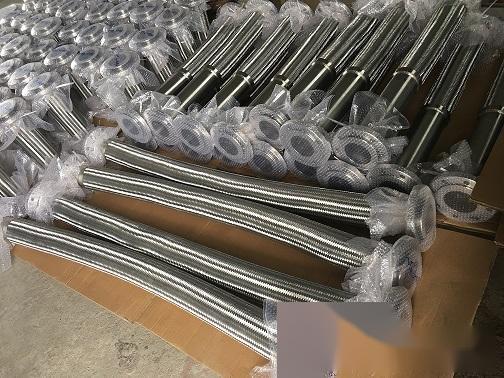Metal hoses are particularly flexible between joints, making them more convenient to use. Many consumers choose this type of metal hose when they need one, so they want to know more about the types of metal hoses and purchasing tips, which will help them buy a product that meets their satisfaction. However, our understanding of metal hoses in daily life is very limited. Next, I will share some basic knowledge about metal hoses, hoping it will be helpful to everyone.
Metal Hose Models
Metal hoses are suitable for transporting liquids and all high-temperature media, with specifications ranging from DN20 to DN800mm, depending on the equipment and pipe diameter. The soft hoses are mainly made of stainless steel and come in specifications such as single buckle type P3 and double buckle type P4. The diameters of metal hoses generally range from 5mm to 100mm. The models are formulated according to the requirements of different manufacturers. The general coding rule for metal hoses is: company name code + hose inner diameter + hose outer diameter + single buckle or double buckle code. For example, TF0406D represents a single buckle metal hose produced by Tongfeng, with an inner diameter of 4mm and an outer diameter of 6mm.
Quality Standards for Metal Hoses
1. The metal hose is right-hand wound, and its length is no less than 3m.
2. Specifications in brackets are not recommended for use.
3. Stainless steel metal hoses are made of stainless steel strips and are non-filled metal hoses, mainly used as wire protection pipes.
4. The non-filled P3 type stainless steel metal hose, made of stainless steel strips, is used as a wire protection pipe.
5. The pitch between metal hose segments should be flexible and have elastic support; blocking and excessive tensile elasticity are not allowed.
6. There should be no cracks or severe fraying at the inner and outer connection points of the metal hose.
7. The thickness of the stainless steel strip and theoretical quality.












